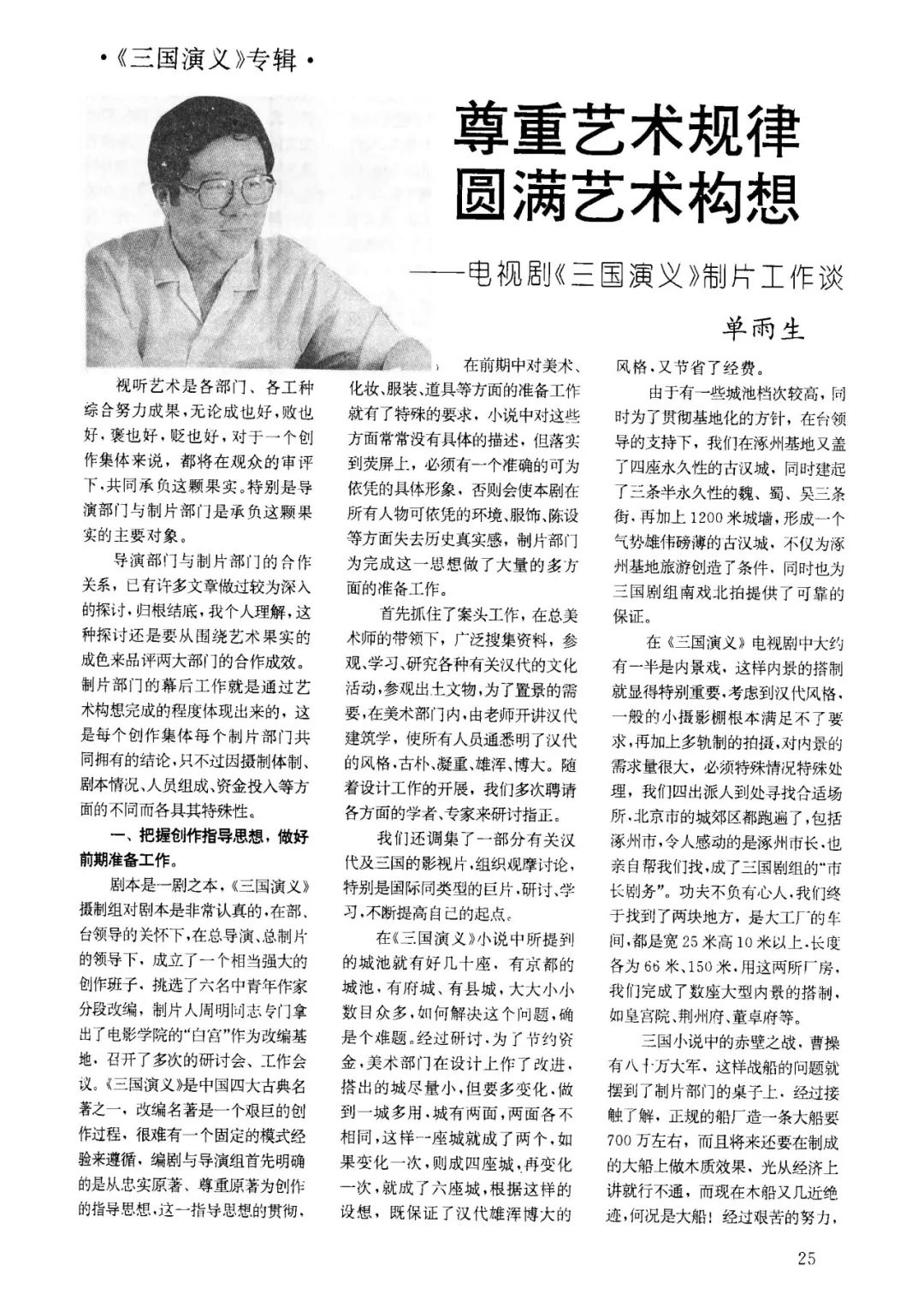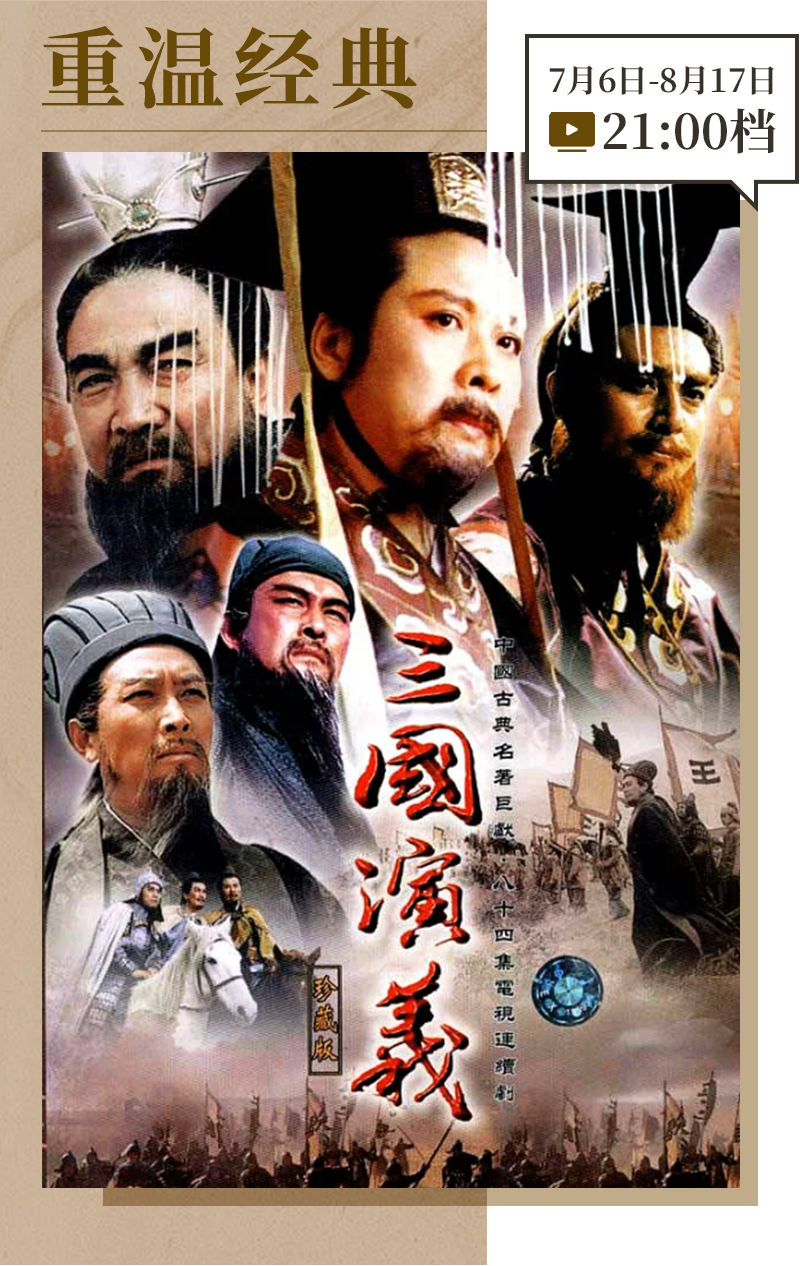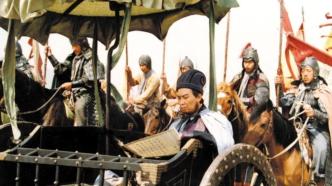
Editor's Note: The 1994 version of "Romance of the Three Kingdoms" continues to be popular on the "Revisit the Classics" channel. The real scenes and magnificent war scenes that were restored at a huge cost not only shock the audience today, but also make the film and television city built for the filming still a popular tourist destination.
We have compiled extracts from the production notes of the series's chief producer Shan Yusheng to see how television artists 30 years ago overcame numerous difficulties, restored the authentic ancient city of the Three Kingdoms, and created an artistic classic.
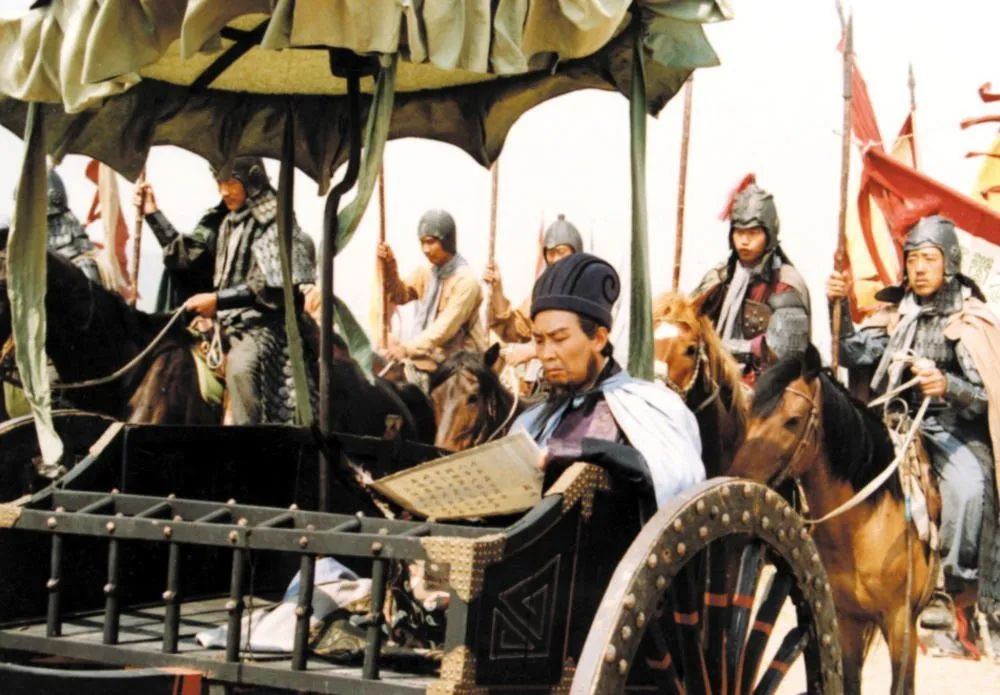
Stills from Romance of the Three Kingdoms
Rebuilding the ancient city of Seoul to achieve a win-win situation for photography and tourism
"Romance of the Three Kingdoms" is one of the four great classical masterpieces of China. Adapting a masterpiece is an arduous creative process, which has higher requirements for preparation work in art, makeup, costumes, props, etc.
For example, there are dozens of cities mentioned in the novel, including the capital city, the prefectural city, and the county town. How to solve this problem is indeed a difficult problem. In order to save money, the art department made improvements in the design, and the scale of the city scenery was as small as possible, but with more changes, so that one city can be used for multiple purposes. The city has two sides, each of which is different, so that one city becomes two. If it changes once, it becomes four cities, which effectively saves money for the crew.
In order to implement the policy of base-based development, with the support of Taiwan leaders, we built four permanent ancient Han cities at the Zhuozhou base, and also built three semi-permanent streets of Wei, Shu and Wu, plus a 1,200-meter city wall, forming a majestic ancient Han city. This not only created conditions for tourism at the Zhuozhou base, but also provided a reliable guarantee for the Three Kingdoms crew to shoot in the south and north.

Stills from Romance of the Three Kingdoms
About half of the play is interior scenes, and the construction of interior scenes is particularly important. Considering the majestic style of the Han Dynasty, a small studio could not meet the requirements. In addition, the multi-track shooting system requires a large number of interior scenes, and special cases must be handled specially - we sent people to look for suitable places everywhere. Touchingly, the then mayor of Zhuozhou personally helped us find a venue and became the "mayor's drama affairs" of the Three Kingdoms crew. Hard work pays off. We finally found two factory workshops and used these two factories to complete the construction of several large interior scenes, such as the Imperial Palace, Jingzhou Mansion, and Dong Zhuo Mansion.
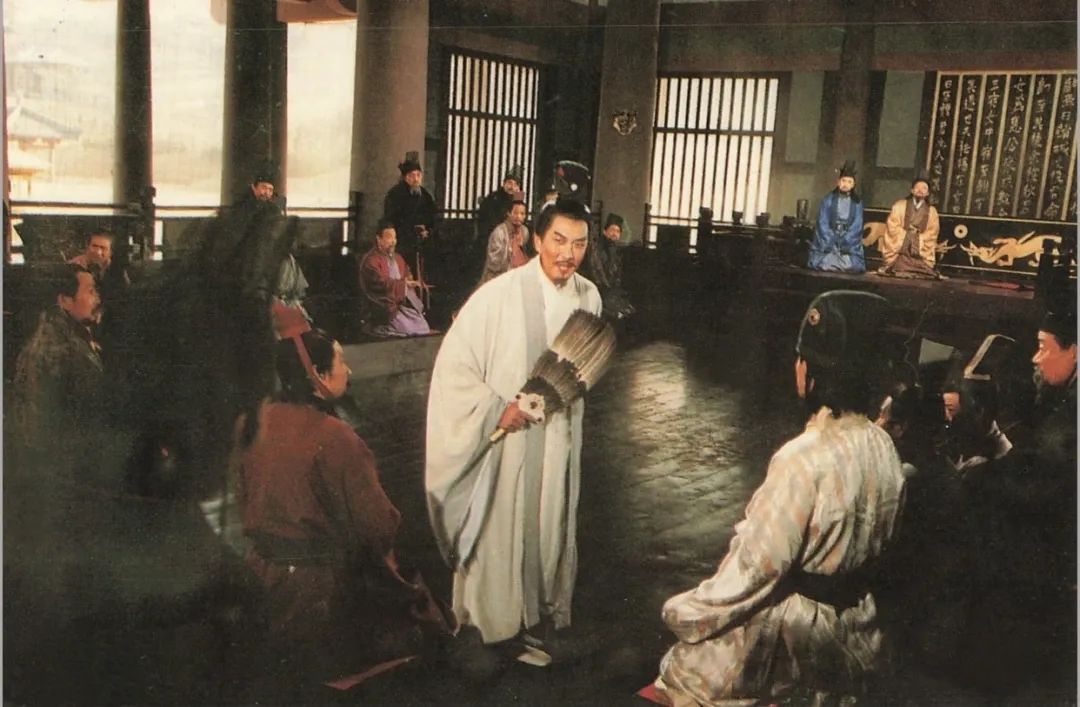
Stills from Romance of the Three Kingdoms
The original novel described the Battle of Red Cliffs, saying that Cao Cao had an army of 800,000, so the issue of warships became a top priority for the production department. After hard work, we finally found a more suitable shipyard, which is now the Wuxi Fishery Shipyard. After negotiations, the factory director was very willing to support our filming, and a total of 27 warships of different sizes were built, but the cost was less than 2 million. The "Three Kingdoms Fleet" built by the shipyard conforms to the ancient characteristics of the Han Dynasty, providing a guarantee for the filming of water battles.

Stills from Romance of the Three Kingdoms
For the sake of art, we open up new paths and overcome difficulties
In order to speed up the shooting progress, the crew took "creating conditions and striving to realize the completion of artistic conception" as the shooting policy. In order to capture the autumn scenery, we took the initiative to start shooting in September 1992.
The Three Kingdoms period is 1,800 years old. In order to avoid being exposed, various departments ran around to select locations, and finally determined several relatively ideal locations - the military shooting range in Huailai County, the natural Yesanpo, the vast and barren Yongding Hetao... Although these places meet the filming requirements, they cause difficulties for the production department. The journey is long, the road is bumpy, there is no road to go, and there is no place to rest or cook... No matter what, as long as the crew determines the scene, we must overcome the difficulties.
In the filming location where there are few people, we have to do a good job of logistics for the crew. Even if we have to send meals from Beijing, we have to send them in. For this reason, we also prepared insulated buckets so that the crew can eat hot meals in winter and drink green bean soup in summer. Where there are no roads, we just made a way. In a valley in Fangshan, we temporarily used a bulldozer to flatten the road so that the crew could drive in in time.
In short, in order to ensure artistic quality, no difficulty can stop us.
Living outdoors, just to complete a unified artistic conception
The production work must not only cooperate well with the director, effectively improve the shooting quality, complete the task with high standards, but also strive to reduce the financial expenditure. In terms of crew management, we take a variety of measures, such as adopting the shooting method of Team A and Team B to speed up the progress, reduce consumption, and effectively do a good job in reshooting to avoid increasing expenses in the later stage. In addition, we also manage the construction of some projects.
It took us about six months to complete the construction of the three streets of Wei, Shu and Wu in Zhuozhou Base, which accounted for a large proportion of the shooting scenes. During the shooting process, the crew's set makers lived in temporary straw huts. Zhuozhou Film and Television Base is located in the Hetao area, where the wind is very strong and the sand will fly with the slightest wind. The hard work of the set makers can be imagined!
Production work is not all about administrative and logistical work. More importantly, it is about participating in artistic creation, respecting artistic laws, and realizing the creator's artistic conception. The success of "Romance of the Three Kingdoms" is inseparable from the hard work of many main creative personnel and crew members. Of course, it is also inseparable from the "Three Kingdoms" leadership team's boldness, decisive decision-making, and valuable spirit of courage to shoulder heavy responsibilities. We will never forget the shooting in the bitterly cold night of the Yesanpo Valley in the severe winter, the heat of the Yongding River, the wind and sand at the Huailai shooting range, and the deep feelings of the majority of crew members for the "Romance of the Three Kingdoms" crew. It is everyone's efforts that have supported the artistic fruit of "Romance of the Three Kingdoms"!
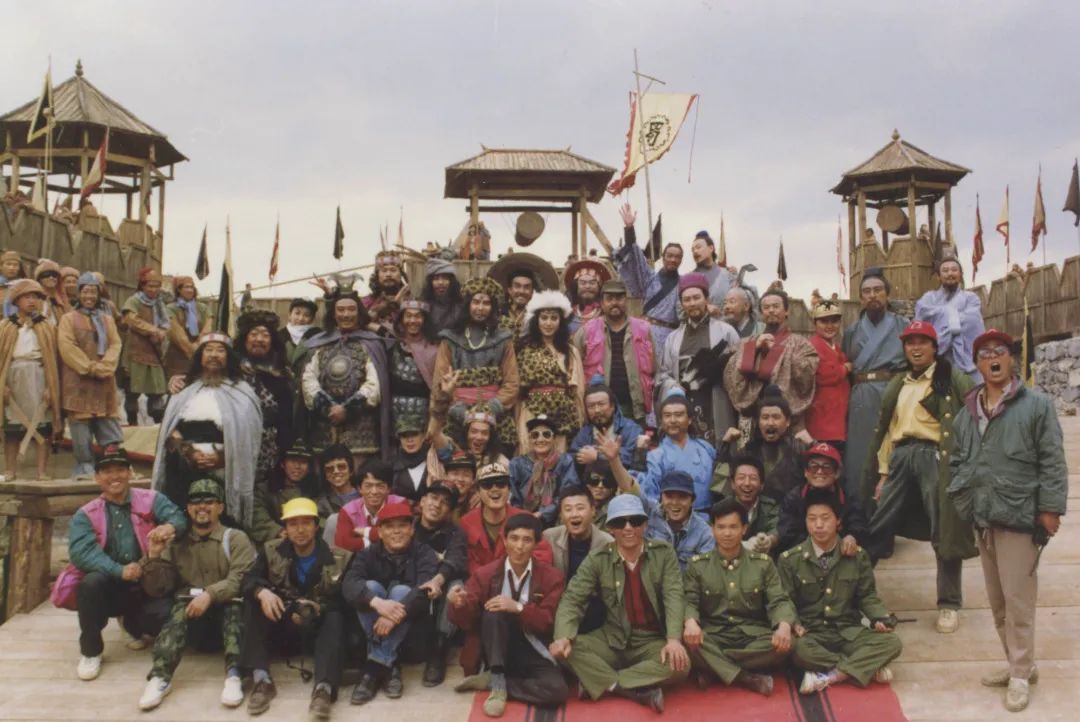
Photos from the set of Romance of the Three Kingdoms
Appendix: The original article of "Respecting the Laws of Art and Perfecting the Artistic Conception - Talking about the Production of the TV Series "Romance of the Three Kingdoms"" from the 12th issue of "China Television" magazine in 1994
